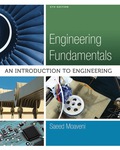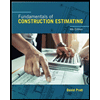
Concept explainers
Investigate the volume capacity of a barrel of oil in galloons, cubic feet, cubic meters, and the volume capacity of a bushel of agricultural products in cubic inches, cubic feet, and cubic meters.
Answer to Problem 23P
The volume capacity of a barrel of oil in galloons, cubic feet, cubic meters is
Explanation of Solution
Volume capacity of the Barrel:
Barrel is the wooden container in the form of cylindrical shape. The wooden staves are used to make the barrel by rounding the staves using the hoops. The barrel is in curved shape and the structure is convex and bulges at the center of the barrel which is called as bilge. Such a shape is used to manufacture the barrel in order to roll it and make the roller to change the moving directions with little friction by comparing with the cylinder.
According to the U.S. standard, a barrel contains
Consider the following expression to calculate the value from gallons to cubic feet,
Consider the following expression to calculate the value from gallons to cubic meters,
Volume capacity of the Bushel:
Bushel is the US customary unit for the mass or weight which is based upon the measure of dry capacity. It is a unit of units used for measurement of agricultural products such as corn, beans, flaxseeds etc.
According to the U.S. standard, a bushel contains
Consider the following expression to calculate the value from dry gallons to cubic inches in dry capacity,
Consider the following expression to calculate the value from dry gallons to cubic feet,
Consider the following expression to calculate the value from dry gallons to cubic meters,
The volume capacity of a barrel of oil in galloons, cubic feet, cubic meters is
The barrel is the old unit to measure the volume of oil, fluid or dry barrels. It is used to measure the bulk amount of containers especially in U.S and U.K.
Bushel is the US customary unit of volume for the mass, used to measure the bulk range of mass in volume used specially in U.S and UK.
The relation in both volume units is
And
The American merchants are used to measure the products in Barrels and Bushels.
Conclusion:
Thus, the volume capacity of a barrel of oil in galloons, cubic feet, cubic meters is
Want to see more full solutions like this?
Chapter 7 Solutions
EBK ENGINEERING FUNDAMENTALS: AN INTROD
- I need detailed help solving this exercise from homework of Engineering Mathematics II.I do not really understand how to do, please do it step by step, not that long but clear. Thank you!P.S.: Please do not use AI, thanks!arrow_forwardI need detailed help solving this exercise from homework of Engineering Mathematics II.I do not really understand how to do, please do it step by step, not that long but clear. Thank you!P.S.: Please do not use AI, thanks!arrow_forwardI need detailed help solving this exercise from homework of Engineering Mathematics II.I do not really understand how to do, please do it step by step, not that long but clear. Thank you!P.S.: Please do not use AI, thanks!arrow_forward
- I need detailed help solving this exercise from homework of Engineering Mathematics II.I do not really understand how to do, please do it step by step, not that long but clear. Thank you!P.S.: Please do not use AI, thanks!arrow_forwardI need detailed help solving this exercise from homework of Engineering Mathematics II.I do not really understand how to do, please do it step by step, not that long but clear. Thank you!P.S.: Please do not use AI, thanks!arrow_forwardB1.For the truss below, take P₁ = 4 kip and P₂ = 3 kip: a. Determine all member forces. Hint: first find zero-force members (16 pts). b. Use a section cut to verify your answers for members JI, BI, and BC (4 Pts) В 18 ft 6 ft H B 6 ft C 8 ft D p81 8 ft E 8 ft 6 ft F6ftarrow_forward
- Q13: The line CD, C(xc, 6), D(6,yd), the point D is on the right of point C, the value of horizontal effect H(3,0) is on the right of point C, the vertical effect V(0, -2) right of H. the distance between projection of the points H, V is 5cm, Find: 1- The value of xc and yd. 2- The distance between projections of the points C, D. 3- The true length (T.L.) of CD. 4- The angles a and ẞ. 5- A point F in the middle of line CD, find F (xf, yf).arrow_forwardQ9: The straight line AB of true length (8) cm, having the following data: A (5, ya) & B (xb, yb), the point B is on the left of point A, the inclination of the line to the horizontal plane (H.P) is 30° (a) it Horizontal trace H (-3, 0), and point H is on the left of point A with distance (16) cm. Draw the Plan & Elevation of the line AB and determine the following: 1. The missed coordinates: ya, xb, yb. 2. The coordinates of the vertical trace (V). 3. The inclination of the line to the vertical plane (V.P) (B). 4. The distance between projections of the points A and Barrow_forwardQ12: The straight line AB, having the following data: the distance between projections of the points A and B is 8 cm, and A (2.5, 0) & B (0, 6), the point B is on the left of point A. Draw the Plan & Elevation of the line AB and determine the following: 1. The true length T.L of the line AB. 2. The coordinate of Vertical trace V and Horizontal trace H. 3. The inclination of the line to the V.P and H.P. 4. A point E in the middle of the line AB, find E (xe,ye).arrow_forward
- Deformation of a retaining wall is assumed to be as presented in the figure below. Determine:a) variation of the active and passive pressures on the wall for the presented deformation b) magnitude of the total horizontal force on the right side of the wall.arrow_forward2. a) Consider a cable used for aerial tramway (see figure a). The span is 400 m. The unstretched length of the cable is 402 m. Its mass per unit length is 10kg. The elasticity EA = 10 N. Find the horizontal load on the two ends and the sag d. Determine if the small sag condition is satisfied. b) When a cable car whose mass is 500kg is hung below the cable at a horizontal distance of 100 m from the left end, find the horizontal load on the ends. C) As the car goes along the cable, at which position you will see maximum horizontal load on the two ends?arrow_forwardTwo square surface footings are placed 20 feet apart. Calculate ultimate settlements beneath footing I and at the centerline of the two footings.arrow_forward
 Engineering Fundamentals: An Introduction to Engi...Civil EngineeringISBN:9781305084766Author:Saeed MoaveniPublisher:Cengage Learning
Engineering Fundamentals: An Introduction to Engi...Civil EngineeringISBN:9781305084766Author:Saeed MoaveniPublisher:Cengage Learning Fundamentals Of Construction EstimatingCivil EngineeringISBN:9781337399395Author:Pratt, David J.Publisher:Cengage,
Fundamentals Of Construction EstimatingCivil EngineeringISBN:9781337399395Author:Pratt, David J.Publisher:Cengage,

